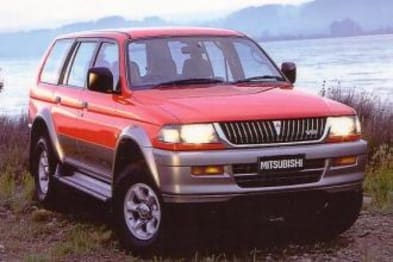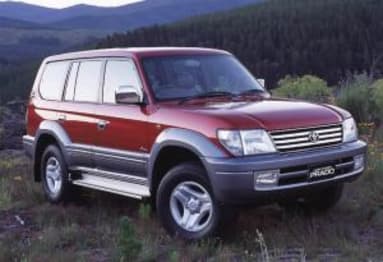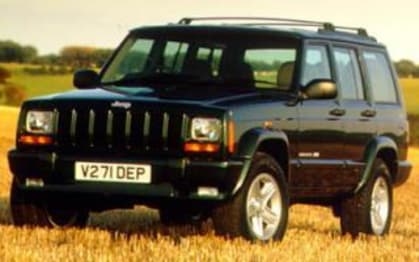
Used Mitsubishi Challenger review: 1998-2007
- Mitsubishi Challenger
- Mitsubishi Challenger 2006
- Mitsubishi Challenger 2007
- Mitsubishi Challenger 1998
- Mitsubishi Challenger 1999
- Mitsubishi Challenger 2000
- Mitsubishi Challenger 2001
- Mitsubishi Challenger 2002
- Mitsubishi Challenger 2003
- Mitsubishi Challenger 2004
- Mitsubishi Challenger 2005
- Mitsubishi Challenger Reviews
- Mitsubishi Reviews
- Mitsubishi SUV Range
- SUV
- Mitsubishi
- Used Car Reviews
- Buying tips
- Family Cars

Mitsubishi Challenger is a genuine 4WD, not a soft-roader dressed up to look like the real thing. In its early days, back at its Australian introduction in 1998, the Challenger was virtually a Mitsubishi Triton pickup with a station wagon body.
Sold as a lower-cost option to the Mitsubishi Pajero, Challenger shared some features with its big brother. As it was developed over the years it moved upwards from those humble pickup beginnings and became a model in its own right.
Challenger is almost as long and wide as Pajero, but is significantly lower to give it a sporty look which is complemented by big wheels and tyres and large guard extensions. This vehicle is certainly sporty-looking and built to appeal to the suburban 4WD buyer. At the same time it will impress the ‘real’ off-road driver with its rugged build.
While the Challenger isn’t as sophisticated as the Pajero it has reasonable on-road comfort for its type and most owners are happy with its characteristics.
Off-road the Challenger is a competent performer. Take it to forest trails and it will cope with ease, same at the beach. It’s only when you want to challenge rocky shelves and really steep slopes that it can struggle at times in comparison with the Pajero.
Mitsubishi Challenger is strictly a five-seater, unlike Pajero which can carry seven in some models. Challenger has good head and legroom but is a bit cramped for width in the back for three big adults.

Luggage space is excellent, with plenty of length and width. The area is quite easy to load despite being high off the ground. There is also plenty of in-cabin storage space.
The Challenger’s engine is the same 3.0-litre V6 unit as is used on upmarket Triton models. Each cylinder has four valves, but they are driven by a single overhead cam, not a twin-cam layout. The engine is willing enough, but is slightly down on torque at everyday revs. So you have to work at gearchanging to keep it working to best advantage.
Not that that's a hassle as the five-speed manual gearbox is light and easy to use. The automatic transmission is a four-speed unit in an era when many new competitors have moved up to five-speed units, but the tranny comes with Mitsubishi’s semi-intelligent change system so that it can be used as a sequential manual.
The Challenger’s V6 powerplant doesn’t sit in front of the highly-regarded Super Select 4WD system fitted to the Mitsubishi Pajero, rather it uses an old-style setup which normally drives the rear wheels only. The two-speed transfer case can be shifted on-the-fly between 2H and 4H at speeds of up to 100 km/h and the front hubs are automatic. So, apart from the inability to use 4WD on sealed roads the system is almost as good as the Super Select one.
The suspension was retuned for Australian driving tastes in the original ute-based model. The downside is a ride which may be too firm for a some buyers on the original model. It makes the Challenger tiring on a long trip on the typically B-grade bitumen road. Mitsubishi gave the Challenger major revisions to the suspension as part of the mid-2000 facelift and mechanical makeover. However, it's still not the most comfortable 4WD on the market.
Spare parts availability is good and we have heard of no complaints about pricing.
Insurance is satisfyingly low due to the simple mechanical makeup of the Challenger and to the fact that it's generally sold to sensible, conservative buyers.
Challenger was discontinued in 2007 to make way for lower-cost variants of the Pajero, only to be revived late in 2009 as a 2010 model. These are still too new to be considered here as used vehicles but we are keeping an eye on them and they are already looking like excellent value.
What to look for
If you suspect the Mitsubishi Challenger has had a lot of use on dirt roads and in off-road conditions make a careful check of the interior fittings as the firm suspension can eventually cause squeaks and rattles.
Look over the cabin for signs of rough usage, being sure to look into all the hidden storage areas for damage that may have been caused by bored junior travellers.
At the same time check out the luggage area for damage and/or bad staining.

While the Challenger was built down to a price, quality certainly didn’t suffer and there's the typically impressive Japanese attention to detail.
Look under the Challenger’s body for signs of damage caused by too-hard driving in harsh areas. Also look and taste for salt on the chassis rails. Salt can really attack steel and frequent beach use can cause corrosion to rip into the metal if it’s left unchecked.
Make sure that the Mitsubishi’s engine starts easily and idles smoothly as soon as it settles into its rhythm.
Check the engine doesn't blow any exhaust smoke when accelerated hard, especially after it's been idling for a while. It if does it could be due for an expensive overhaul.
Be sure that all gearchanges are smooth and light.
Check that 4WD is engaged in both high and low ratios without too much effort.
How much?
Expect to pay from $4500 to $8000 for a 1998 Mitsubishi Challenger; $6000 to $11,000 for a 2000 Challenger; $9000 to $14,000 for a 2002 LS; $12,000 to $18,000 for a 2004 Challenger; $14,000 to $20,000 for a 2004 LS or a 2005 Challenger; $18,000 to $25,000 for a 2007 Challenger; and $20,000 to $29,000 for a 2007 LS.
Car buying tip
No matter how good a vehicle appears to you it still makes a lot of sense to have it inspected by a professional before handing over your hard earned cash.
Pricing
| Year | Price From | Price To |
|---|---|---|
| 2007 | $3,080 | $5,830 |
| 2006 | $2,860 | $5,390 |
| 2005 | $2,860 | $5,940 |
| 2004 | $3,410 | $7,260 |
| 2003 | $3,300 | $9,240 |
| 2002 | $3,080 | $9,240 |
| 2001 | $3,300 | $5,940 |
| 2000 | $3,300 | $5,940 |
| 1999 | $3,300 | $5,390 |
| 1998 | $3,300 | $5,390 |
Pricing guides
Range and Specs
| Vehicle | Specs | Price* | |
|---|---|---|---|
| (4X4) | 3.0L, ULP, 4 SP AUTO 4X4 | $3,410 – 5,390 | 1998 Mitsubishi Challenger 1998 (4X4) Pricing and Specs |
$2,970
Lowest price, based on third party pricing data










